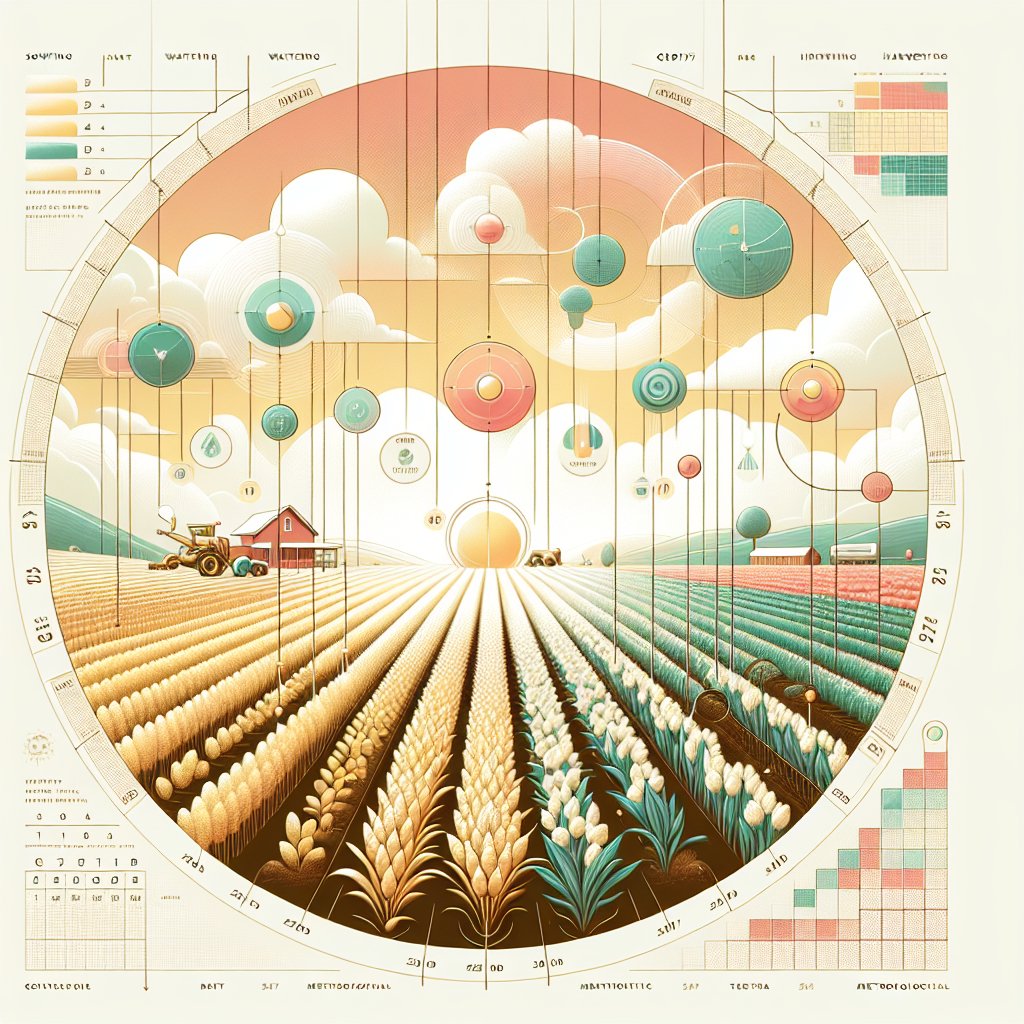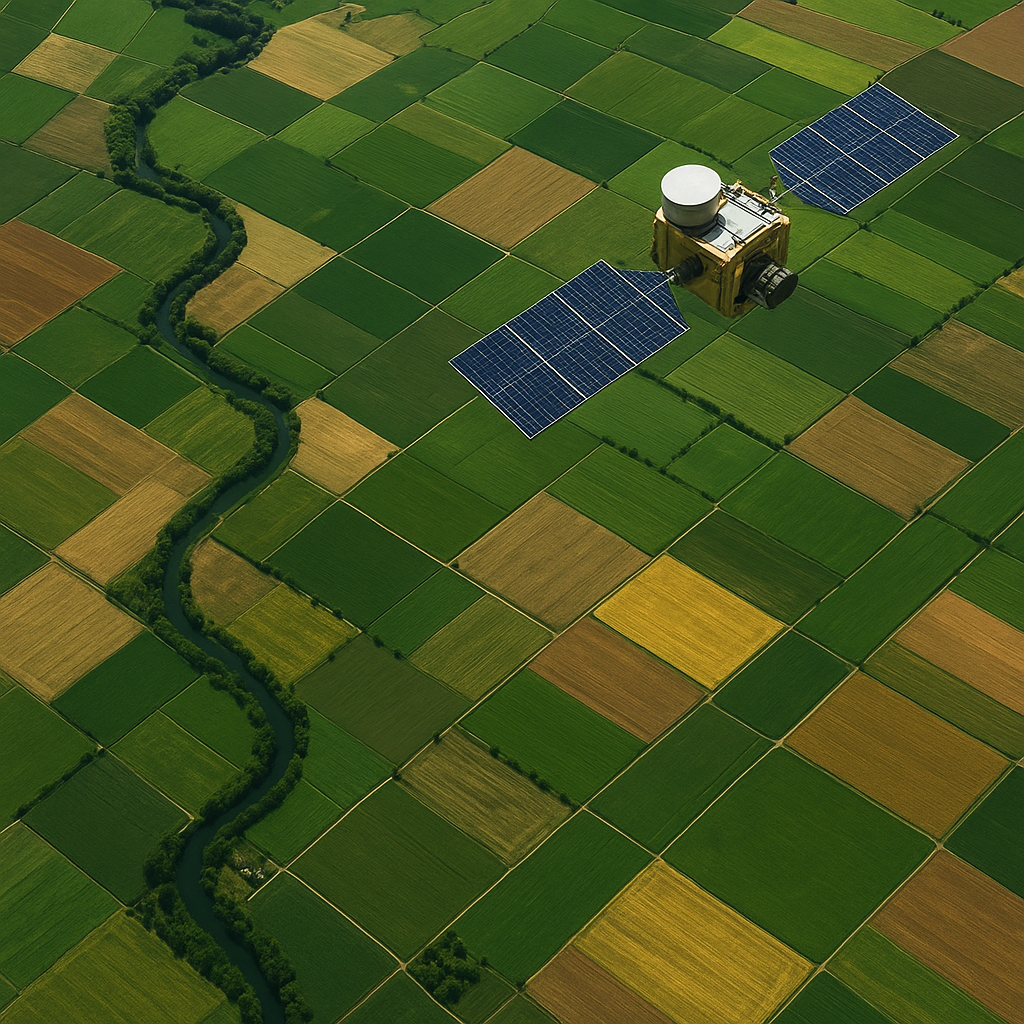Creating a crop calendar for your farm is an essential step in optimizing agricultural productivity and ensuring a successful harvest. A well-structured crop calendar helps farmers plan their planting and harvesting activities, manage resources efficiently, and anticipate potential challenges. This article will guide you through the process of developing a crop calendar tailored to your farm’s specific needs and conditions.
Understanding the Importance of a Crop Calendar
A crop calendar is more than just a schedule; it is a strategic tool that aligns agricultural activities with the natural cycles of the environment. By understanding the importance of a crop calendar, farmers can make informed decisions that enhance productivity and sustainability.
Enhancing Resource Management
One of the primary benefits of a crop calendar is its ability to improve resource management. By planning ahead, farmers can allocate resources such as labor, water, and fertilizers more efficiently. This foresight helps in reducing waste and optimizing the use of available resources, ultimately leading to cost savings and increased profitability.
For instance, knowing the exact planting and harvesting dates allows farmers to schedule labor effectively, ensuring that there are enough workers available during peak periods. Similarly, understanding the water requirements of different crops at various growth stages helps in planning irrigation schedules, thereby conserving water and reducing costs.
Mitigating Risks and Challenges
A well-prepared crop calendar also plays a crucial role in risk management. By anticipating potential challenges such as pest infestations, diseases, and adverse weather conditions, farmers can implement preventive measures to mitigate these risks. For example, if a particular crop is prone to pest attacks during a specific growth stage, farmers can plan to apply pest control measures in advance, reducing the likelihood of crop damage.
Moreover, a crop calendar helps farmers adapt to changing climatic conditions by allowing them to adjust planting and harvesting dates accordingly. This flexibility is particularly important in the face of climate change, where traditional farming practices may no longer be viable.
Steps to Create a Crop Calendar
Developing a crop calendar involves several key steps, each of which requires careful consideration and planning. By following these steps, farmers can create a comprehensive and effective crop calendar that meets their specific needs.
Assessing Farm Conditions
The first step in creating a crop calendar is to assess the specific conditions of your farm. This includes understanding the soil type, climate, and topography, as well as identifying any unique challenges or opportunities that may affect crop production. Conducting a thorough assessment will provide valuable insights into which crops are best suited to your farm and how they should be managed throughout the growing season.
Soil testing is an essential part of this assessment, as it provides information on soil fertility, pH levels, and nutrient content. Based on the results, farmers can determine the appropriate crops to plant and the necessary soil amendments to enhance fertility. Additionally, understanding the local climate, including temperature, rainfall patterns, and frost dates, will help in selecting crops that are well-adapted to the environment.
Selecting Crops and Varieties
Once you have a clear understanding of your farm’s conditions, the next step is to select the crops and varieties that you wish to grow. Consider factors such as market demand, crop rotation practices, and the potential for value-added products when making your selections. It is also important to choose crop varieties that are resistant to local pests and diseases, as this will reduce the need for chemical interventions and promote sustainable farming practices.
When selecting crops, consider the benefits of crop diversification. Growing a variety of crops can reduce the risk of total crop failure due to pests, diseases, or adverse weather conditions. Additionally, crop diversification can improve soil health and increase biodiversity on the farm, contributing to long-term sustainability.
Determining Planting and Harvesting Dates
With your crop selections in place, the next step is to determine the optimal planting and harvesting dates for each crop. This involves considering factors such as the crop’s growth cycle, local climate conditions, and market timing. By aligning planting and harvesting dates with these factors, farmers can maximize yields and ensure that their produce reaches the market at the right time.
To determine planting dates, consider the average last frost date in your area and the specific temperature requirements of each crop. For harvesting dates, take into account the crop’s maturity period and any post-harvest handling requirements. It is also important to consider the availability of labor and equipment during these critical periods to ensure a smooth and efficient operation.
Integrating Crop Rotation and Succession Planting
Incorporating crop rotation and succession planting into your crop calendar can further enhance productivity and sustainability. Crop rotation involves growing different crops in a specific sequence on the same land to improve soil health and reduce pest and disease pressure. By planning crop rotations in advance, farmers can ensure that each crop benefits from the residual effects of the previous crop, such as improved soil fertility and reduced pest populations.
Succession planting, on the other hand, involves planting the same crop at different times to ensure a continuous harvest throughout the growing season. This practice is particularly useful for crops with a short harvest window, such as lettuce or radishes. By staggering planting dates, farmers can maintain a steady supply of fresh produce for the market, increasing their competitiveness and profitability.
Implementing and Monitoring the Crop Calendar
Once the crop calendar is developed, the next step is to implement and monitor it throughout the growing season. This involves regular record-keeping, field observations, and adjustments as needed to ensure that the calendar remains relevant and effective.
Record-Keeping and Documentation
Maintaining accurate records is essential for the successful implementation of a crop calendar. This includes documenting planting and harvesting dates, input applications, weather conditions, and any pest or disease occurrences. By keeping detailed records, farmers can track the progress of their crops and identify any deviations from the planned schedule.
Record-keeping also provides valuable data for future planning and decision-making. By analyzing past records, farmers can identify trends and patterns that may influence future crop calendar decisions, such as changes in climate or market demand.
Field Observations and Adjustments
Regular field observations are crucial for monitoring the progress of crops and identifying any issues that may arise. By conducting routine inspections, farmers can detect early signs of pest infestations, diseases, or nutrient deficiencies and take corrective action before significant damage occurs.
Based on field observations, farmers may need to make adjustments to the crop calendar, such as altering planting or harvesting dates, changing input applications, or implementing additional pest control measures. Flexibility and adaptability are key to ensuring that the crop calendar remains effective in the face of changing conditions.
Conclusion
Creating a crop calendar is a vital component of successful farm management. By understanding the importance of a crop calendar and following the steps outlined in this article, farmers can optimize their agricultural practices, enhance resource management, and mitigate risks. A well-structured crop calendar not only improves productivity and profitability but also contributes to the long-term sustainability of the farm. As farmers continue to face new challenges and opportunities, the crop calendar will remain an indispensable tool in navigating the complexities of modern agriculture.



